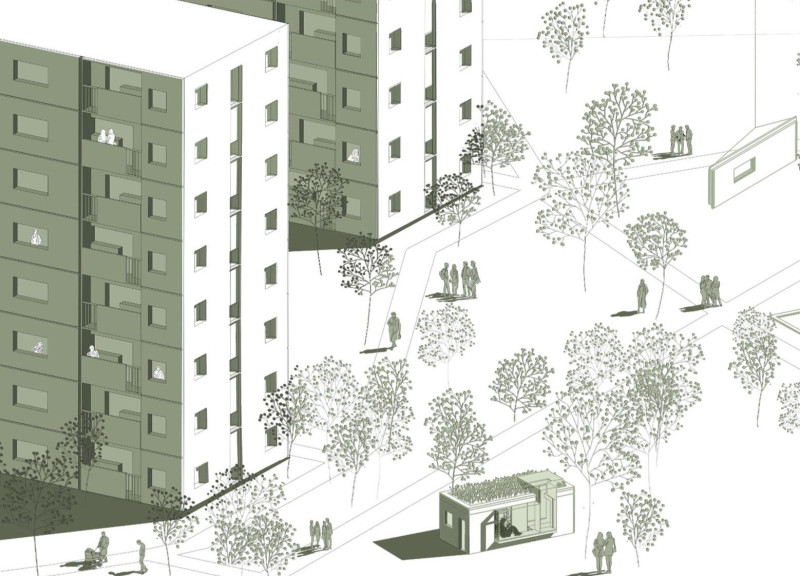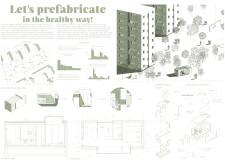5 key facts about this project
The project “Healthy Big Panel” focuses on addressing urban air pollution in Poland. Located near typical prefabricated housing, it reinterprets these structures to fit a modern approach to environmental issues. The design meshes historical forms with contemporary ideas, aiming to improve urban living while tackling important ecological challenges.
Design Concept
The core idea behind “Healthy Big Panel” merges modern sustainability with traditional architecture. By taking inspiration from the Soviet-era prefabricated systems, the design offers a residential solution that acknowledges both past influences and current necessities. This approach situates the project within its social and economic environment, serving as a practical living space that responds to the urgent need for better air quality.
Materials and Sustainability
Precast concrete is used as the main structural material, providing strength and facilitating construction. The facade features titanium dioxide, which helps purify the air. Through photocatalytic reactions, this material breaks down nitrogen oxides and other harmful pollutants. This duality of function enhances the building's durability while ensuring it plays an active role in reducing urban smog.
Green Infrastructure
The green roof is a notable element of the design, contributing to biodiversity and managing stormwater effectively. By incorporating nature into the urban setting, it helps improve the overall environmental quality of the area. The presence of the green roof highlights the project's dedication to fostering a healthier living environment while recognizing the complexities of urban ecosystems.
Energy Efficiency
The design also includes a skylight equipped with photovoltaic glass. This feature generates energy on-site, making the building more self-sufficient. By supporting renewable energy use, it aligns with current architectural trends focused on reducing ecological impact. The energy produced contributes to the building's functionality, enhancing the overall experience for those who live there.
The building's facade, enhanced by titanium dioxide, offers an aesthetic quality while engaging with its environment. It illustrates a thoughtful blend of form and function, highlighting the potential of architecture to address significant urban and environmental issues.


















































